|
BULB LOG 04 23rd January 2008
ERYTHRONIUMS OF WESTERN NORTH AMERICA
The biggest diversity of species is found down the western side of North America from Vancouver Island in the North to California in the South.
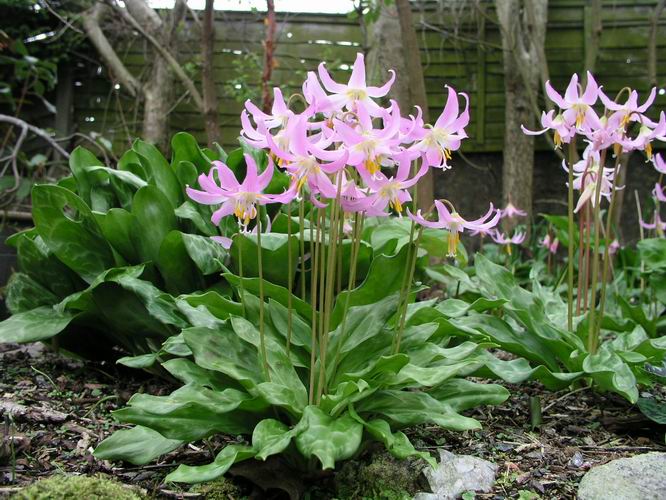
Erythronium revolutum
Erythronium revolutum has one of the widest ranges and can be found growing all the way from California up to Vancouver Island. It should be no surprise that a species with that wide a distribution will show quite a variation.
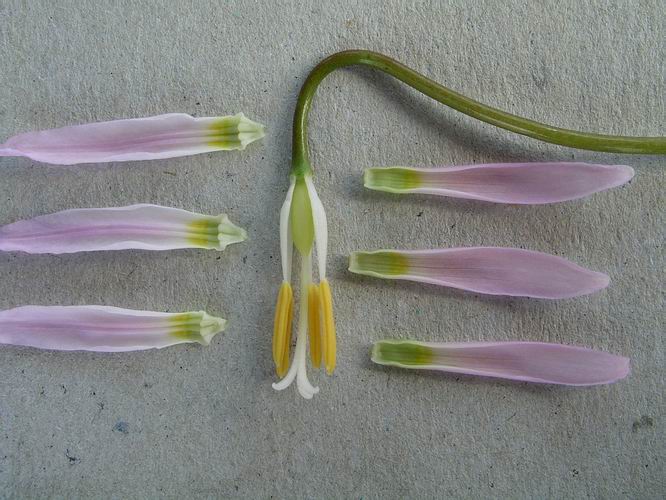
Flower section
It is easy to identify revolutum as it is the only pink erythronium apart from the Eurasian dens-canis. The pollen while mostly golden yellow can occasionally be cream or white. The filaments which connect the pollen-laden anthers to the flower are expanded like Dutchman's breeches.
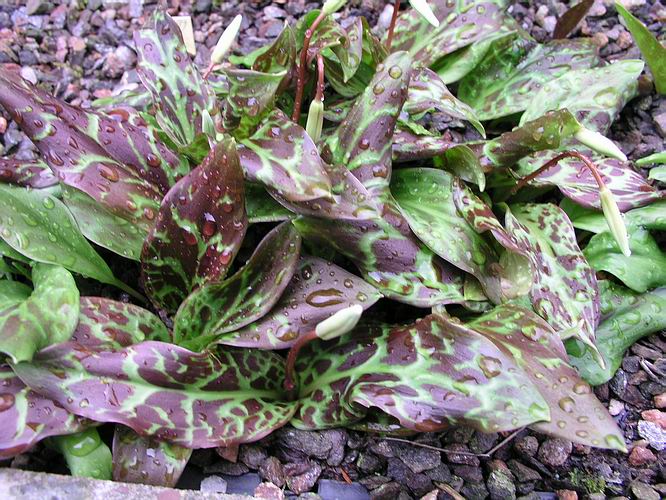
Revolutum Leaves
The variable brown pattern on the leaves of revolutum can be very dramatic and follows the veins of the leaves. When you look carefully you can see it is quite different from the random blotching seen in dens-canis.
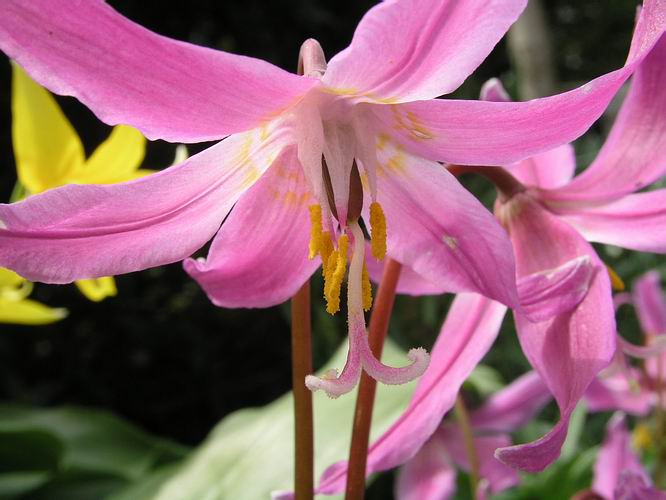
Erythronium revolutum 'Johnsonii'
Large dark flowered forms like this are often called var. johnsonii.
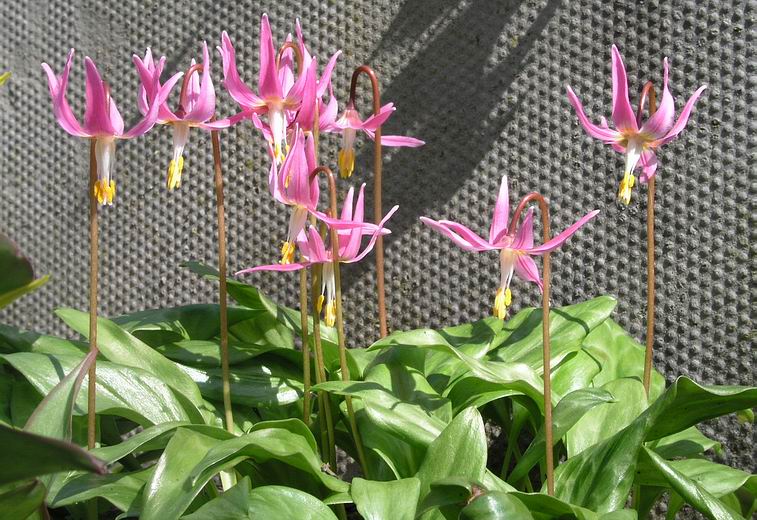
Revolutum collected form.
Above is another form of revolutum, grown from wild collected seed, which is smaller than the others.

Revolutum col form flower
It has dark pink/red flowers with very steeply swept back petals, there is also pink on the filaments and style. It is very attractive and comes true from seed.
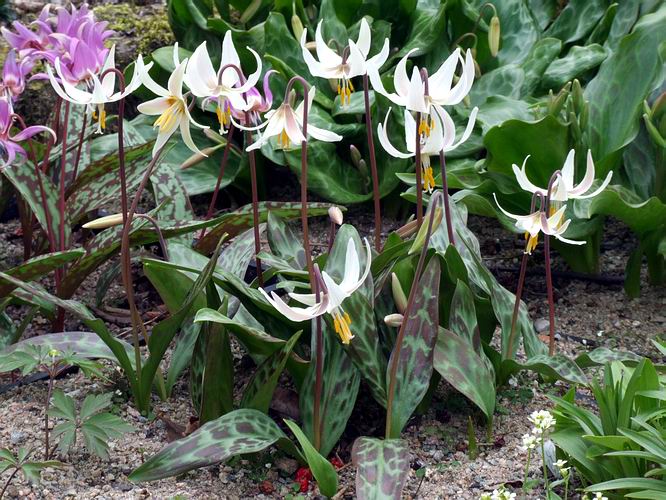
Erythronium oregonum
Erythronium oregonum is the nearest species to revolutum and shares many of the same flower characteristics except its petals are predominantly white.

Oregonum flower
It also shares a similar wide distribution and is found from Oregon up to Britsih Columbla and Vancouver Island.
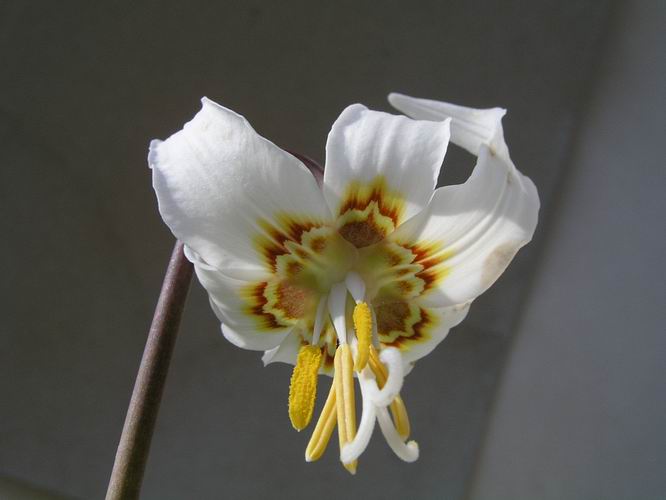
Oregonum flower good marks
In our most attractive forms there is a good brown and yellow zone towards the centre of the flower making it very attractive.
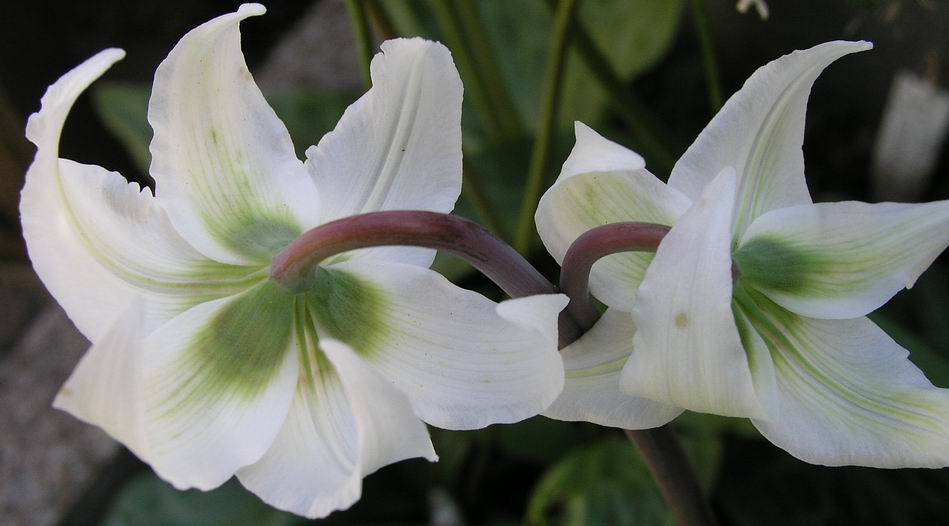
Oregonum flower greenback
Many also have a nice green ring at the back of the petals.
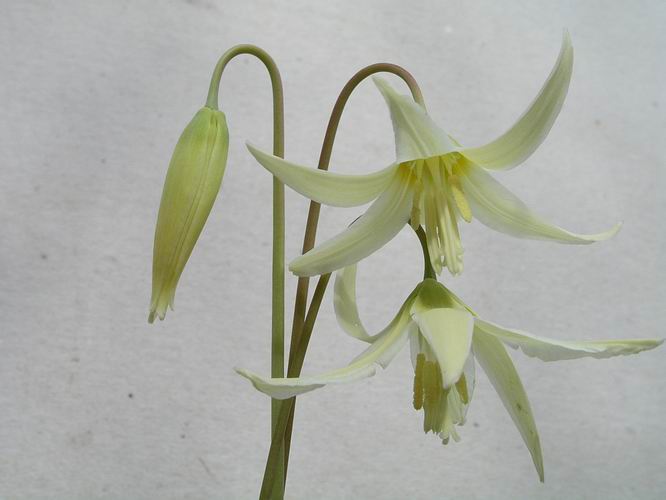
Oregonum leucandrum
Sulphur yellow forms also occur E. oregonum leucandrum often with cream anthers, are also common in cultivation in the UK. I have often seen these sulphur forms wrongly labelled as E citrinum. It is very easy to tell them apart by the filaments; in oregonum they are wide at the centre like Dutchmans breeches and in citrinum they are thin and thread like.
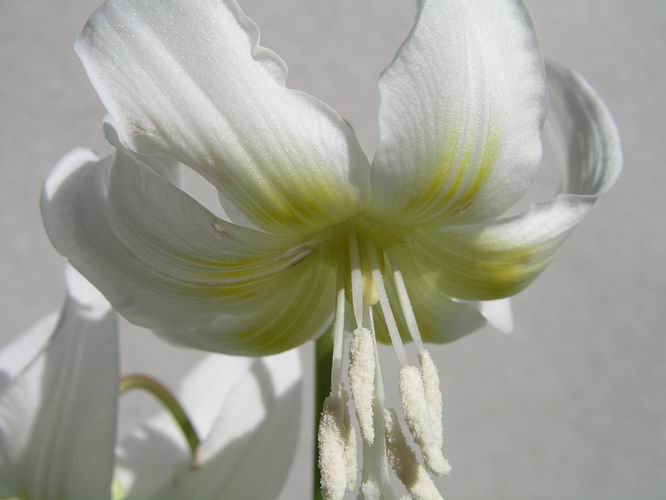
Erythronium californicum
Erythronium californicum, comes from California, as the name suggests. It is one of the many creamy white erythroniums with a yellow centre; all have patterned leaves which vary from a slight silvery trace to dramatic patterns with dark shiny brown areas.
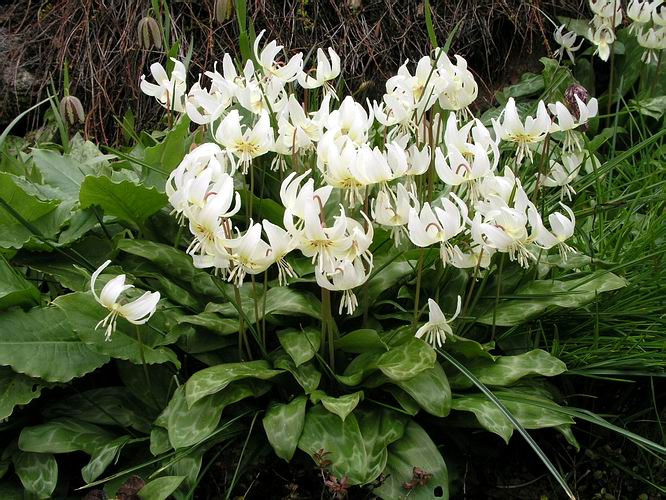
Erythronium 'White Beauty'
Probably the most commonly grown erythronium in the form of 'White Beauty' which has a series of red/brown zig zag markings on the yellow throat.

Erythronium 'White Beauty' flower
It was regularly seen described as E. revolutum 'White Beauty' and I have also seen it listed as a form of oregonum, both of which are incorrect. It does not seem to be anything other than a vigorous form of E. californicum and only a DNA study will tell us if it is a hybrid with any other species.
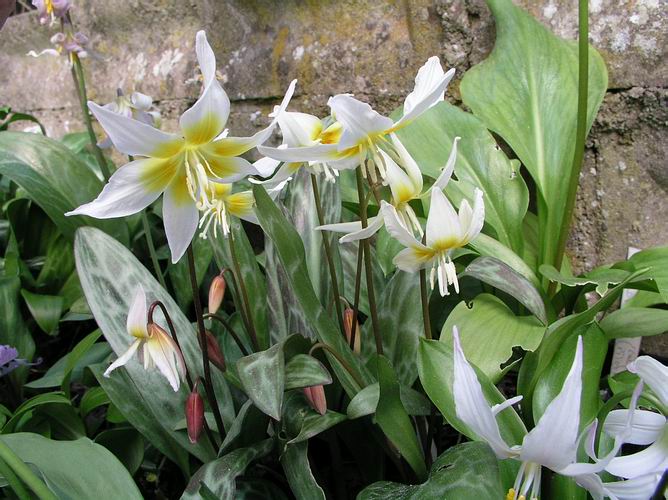
Erythronium multiscapoideum in frame
Also from California ,Erythronium multiscapoideum is superficially similar to E. californicum and is doing well in cultivation.
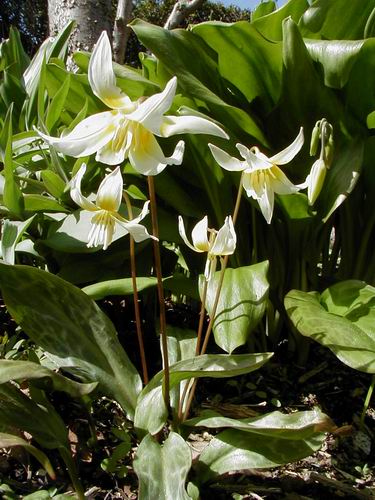
Erythronium multiscapoideum
It produces several flowers on a stem that splits unseen below the level of the leaves making it very distinct as well as giving the impression that several stems are rising from a single bulb and hence the specific name.

Erythronium helenae 2 forms
Erythronium helenae is one of my favourites with the same basic formula of a creamy white flower with a central yellow zone, it too is native to California.

Erythronium helenae flowers
The distinguishing features of this species are there is a distinct change from the central yellow to the white, like a fried egg, and the style is normally bent downwards by as much as 90 degrees. It also has a beautiful scent.
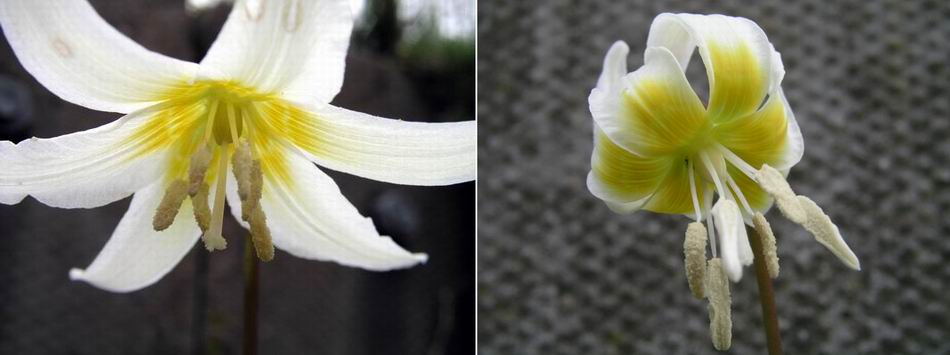
Erythronium citrinum & howellii
More next week.....................
^ back to the top ^
|

